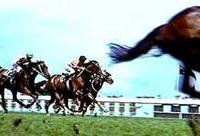 The outbreak of equine influenza (EI) in Australia, which has paralyzed the Commonwealth’s horse industry, brings to light some interesting facts related to Australia’s horse economy.
The outbreak of equine influenza (EI) in Australia, which has paralyzed the Commonwealth’s horse industry, brings to light some interesting facts related to Australia’s horse economy.
Australia has the second-largest number of registered Thoroughbreds in the world (the U.S. is first with 35,000 foals registered annually). According to the Rural Industries Research and Development Corporation for the Australian Government, during the 2005 and 2006 breeding season, 1,695 Thoroughbreds were exported from Australia and 892 were imported. In the same time frame, 29,070 Thoroughbred mares were covered by 883 stallions, resulting in 17,854 foals. Wagering on horse racing alone contributes almost $1 billion to Australia’s government revenue.
The total number of horses in Australia is estimated to be 1.2 million, with the horse industry contributing almost $8 billion annually to the gross domestic product. By contrast, according to the American Horse Council, there are 9.2 million horses in the U.S. and the horse industry has a $102 billion impact on the economy.
Due in part to their isolation from the rest of the world and to the strict quarantine of imported animals, until the recent outbreak, horse populations in Australia and New Zealand had never before been infected with equine influenza. For this reason, Australia and New Zealand have not previously vaccinated against the disease and are reluctant even now to recommend vaccination.
On September 13, the National Management Group (NMG) for the Commonwealth issued a statement re-affirming the view that equine influenza can be contained with a view to eradication, and with current control measures (quarantine) remaining effective. The NMG report points out that vaccination has not, on its own, resulted in EI eradication anywhere in the world and that the use of stringent bio-security measures and movement controls would still be required. Meanwhile, a contingency plan for the possible future use of vaccines is being undertaken.
Equine influenza is a major cause of respiratory disease of horses in North America and Europe, accounting for at times extensive economic losses to the horse industry.
